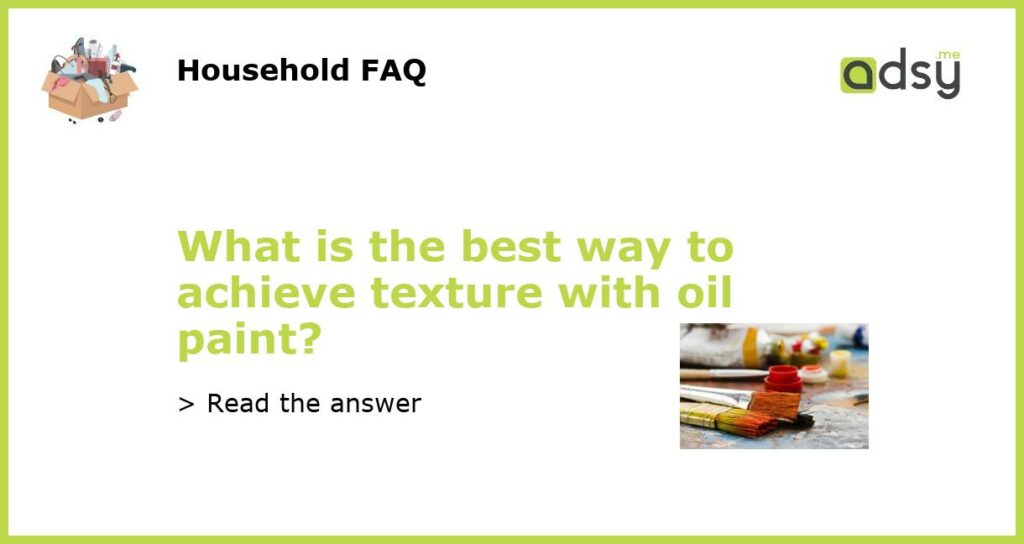Understanding Texture in Oil Painting
Texture is an essential element in oil painting. It helps to create depth, dimension, and visual interest in your artwork. By manipulating the consistency, thickness, and application technique of your paint, you can achieve different types of texture in your painting. From impasto to glazing, each approach has its own unique features and benefits. In this article, we will explore the best way to achieve texture with oil paint.
Impasto Technique for Bold Texture
Impasto is a technique that involves applying thick layers of paint to create a three-dimensional surface on the canvas. This technique is ideal for achieving bold texture and creating an illusion of volume and depth. You can apply impasto with a brush, palette knife, or your fingers. It all depends on the effect you want to achieve and the size of the painting. To achieve impasto texture, use a tube of oil paint that has a thick consistency and apply it directly to the canvas without diluting it with a medium. Keep adding layers until you achieve the desired effect.
Glazing Technique for Delicate Texture
If you want to achieve a delicate texture in your painting, the glazing technique is the way to go. Glazing involves applying thin layers of transparent or semi-transparent paint onto the surface of the painting. This technique is perfect for creating a smooth, glossy finish and for adding depth to your painting. To achieve a glaze effect, mix your paint with a medium such as linseed oil or liquin to make it more translucent. Apply the thinned paint to the canvas with a brush or sponge, then wait for it to dry before adding another layer.
Dry Brush Technique for Expressive Texture
Dry brushing is a technique that involves using a brush that has very little paint on it to create a rough, textured effect on the canvas. This technique is perfect for adding expressive texture and creating movement in your painting. To achieve a dry brush effect, first, load your brush with paint, then remove most of the paint by wiping it on a cloth or paper towel. Next, use the remaining paint on the brush to apply short strokes on the canvas, allowing the brush bristles to create texture and depth.
Palette Knife Technique for Bold and Subtle Texture
The palette knife technique involves using a flat or a trowel-like tool to apply paint to the canvas. This technique can create both bold and subtle texture depending on how it is applied. To achieve a smooth, subtle effect, use the tip of the palette knife to gently swipe the paint across the canvas. For a more dramatic effect, press the knife harder against the canvas, dragging it across the surface to create deep grooves and ridges. This technique is perfect for creating abstract art and for adding texture to paintings of landscapes and seascapes.






